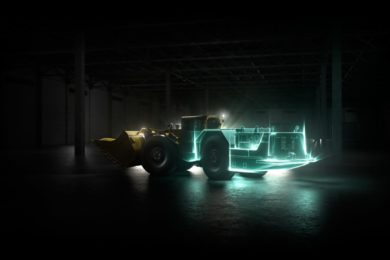In a quarter characterised by high customer activity and a strong demand for aftermarket services, Epiroc had another reason to be positive with the validation of its 2030 sustainability goals by the influential Science Based Targets initiative (SBTi).
Further records were broken in the December quarter – this time it was revenue (coming in at SEK11.1 billion (US$1.19 billion) and operating profit (coming in at SEK2.59 billion) – as the company continued to benefit from its in-house efficiency programs; value-added automated, electric and digitalised offering; and strong order pipeline.
At the same time, Epiroc’s sustainability credentials were shown off for the world to see between October 1 and December 31.
In addition to the SBTi validation, over this period, the company laid out plans at its Capital Markets Day for its third battery-electric retrofit project, the Minetruck MT436B; secured its first order for Scooptram ST1030 battery conversion kits from Evolution Mining’s Red Lake gold operations in Canada (on top of the delivery of new ST14 Battery LHDs); extended its range of flexible charging products for battery-electric mining equipment; and announced a project with Boliden and ABB to develop a next-generation battery trolley setup for the Kristineberg mine in Sweden.
The only thing that was missing from this packed three-month period was the launch of a brand-new battery-electric machine, yet this will come. Epiroc has plans to electrify its full fleet of underground load and haul equipment by 2025 – including battery-electric retrofit solutions for its existing diesel fleet – alongside electrifying its surface fleet by 2030.
In line with SBTi requirements, Epiroc is committing to halve its absolute CO2 emissions in its own operations – so called Scope 1 and Scope 2 – by 2030, with 2019 as base year. However, more than 99% of Epiroc’s total CO2 emissions are other indirect emissions, with about 83% of the total coming from when customers use the products. It has, therefore, committed to halve the absolute CO2 emissions from use of sold products – so called Scope 3 – by 2030.
“This is industry leading and well above SBTi’s minimum requirements,” Epiroc said of the Scope 3 target. “The transition from diesel-powered to battery-electric machines will make a significant impact.”
Does this mean Epiroc will turn off the diesel-powered taps at a certain point, saying it will only supply electric equipment to customers?
Mattias Olsson, Senior VP of Corporate Communications, says no such action is planned, explaining that these Scope 3 targets align broadly with its mining customer base’s own CO2 emission cut goals. The majors all have plans to decarbonise their operations, with the most ambitious looking to hit net zero in 2030-2035. Codelco, for example, plans to electrify all its underground operations by 2030.
Demand for this equipment is bound to be high, which is where Epiroc’s retrofit program could become crucial.
Designed to allow miners an ‘entry point’ into cutting emissions underground through its in-demand midlife rebuild program, Olsson said supply of these machines could accelerate the industry’s electrification uptake and provide quicker access to zero emissions equipment compared with the long lead times that come with new battery-electric machines.
In a market that is becoming increasingly crowded, such an option may differentiate Epiroc from the rest of its peers, in the process, helping it achieve its ambitious goals to help keep global warming at a maximum 1.5° C.










